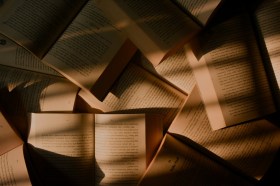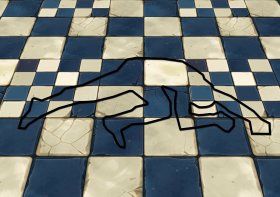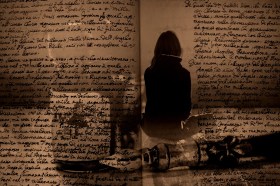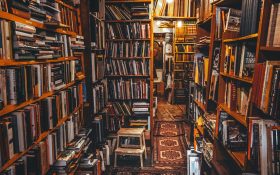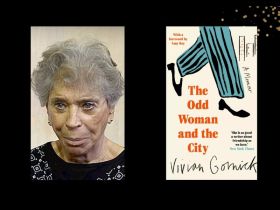Shonaleigh Cumbers had been running up and down stairs between home and office to catch one of the two phones I’d been ringing, to conduct our interview. She relays the scenario to me, laughing, and although I’m on the phone, I get a visual picture of her frantically lunging for the receiver just as it stops ringing.
Shonaleigh is a storyteller, and a busy one at that. I catch up with her between gigs to talk about the art and her residency in Northumberland which recently came to a close.
‘Shall I just start from the beginning?’ she says, when asked about the residency. ‘I’m a storyteller, that’s what we do!’
Shonaleigh begins explaining some of the preconceived notions society has of storytellers. Although the oral art preceded the written word and has roots in different cultures throughout the world, its significance is diminishing.
‘When you work in India or less literature-based societies, storytelling still has a value as an artform,’ she observes. ‘However, in a literature-based society, it’s kind of lost its relevance, its kudos.’
Shonaleigh recently completed a residency in Morpeth, Northumberland, with the Mid Northumberland Arts Group (MidNAG), following her Year of the Artist residency in the region. During the residency, she worked with 22 schools, and adult and writers’ groups, to create one huge story for the town, focused around a park at the centre of a regeneration scheme.
Shonaleigh admits she has been lucky enough to get ongoing work as a storyteller, attributing it to her sheer love of the artform. Her work has taken her into schools, theatres and to folk festivals – even into offices, teaching communication techniques to businesspeople. As a result, she has observed a division in public opinion as to whether storytelling is an art, or just a nuance of everyday conversation.
‘In this country there is a big debate – is storytelling an artform, or is it a “fireside” activity, things that non-professionals do, sitting around the pub. My train of thought it – it’s both! You can’t pigeonhole an artform. Storytelling is something that’s been around for thousands of years,’ Shonaleigh comments.
And she should know – coming from a Jewish background, she grew up surrounded by oral histories passed down from one of the world’s oldest cultures.
‘I was brought up on stories and music – I thought everyone lived like that,’ she says. ‘My grandmother was illiterate – but one of the most educated and wisest women I have ever met. She was a traditional Yiddish storyteller. I tell a lot of her stories, but I don’t tell them the same way because they wouldn’t be relevant. I will tell the same story to ten-year-olds that I tell to adults, but it will be different every single time.’
The primary objective of a storyteller, Shonaleigh contends, is to convey a story. While myths, legends and tales from diverse cultural histories can draw on forms such as dance to tell a tale, for Shonaleigh, it’s through her voice.
‘I’ll get on stage and for two forty-five-minute halves, I will hold an audience with nothing but my voice. Storytelling is about weaving in the theatre of your own mind and that’s where the skill lies.’
‘If I say to you,’ Shonaleigh begins, altering her voice to a dreamy tone, “There was once a great bird, that soared over the seven seas and it carried on its back the song of freedom” – and then I pulled out a picture of puffin – its going to destroy whatever image you had in your head!’
However, her work with community groups also represents the ways in which storytelling is diversifying. In Oldham, she was commissioned to create a soundscape in a gallery with 16-25 year olds. The piece was called Consequences, and led visitors through three landscapes, requiring them to select ‘A’ or ‘B’ to listen to different versions of the same story. Until recently, she also performed with the band Tashbain, using music to underpin the narrative performance.
Ultimately, Shonaleigh highlights the far-reaching influence of storytelling in the way it is used to describe other artforms. However, the paradox is that in that process the art of storytelling is overlooked.
‘The thing that gets me is that it [storytelling] is used to describe other artforms to give it weight and value – “This writer is a master storyteller.” What about storytellers? They’re masters in their own right!’
‘I think storytelling is glue. It holds a lot of other artforms together.’
